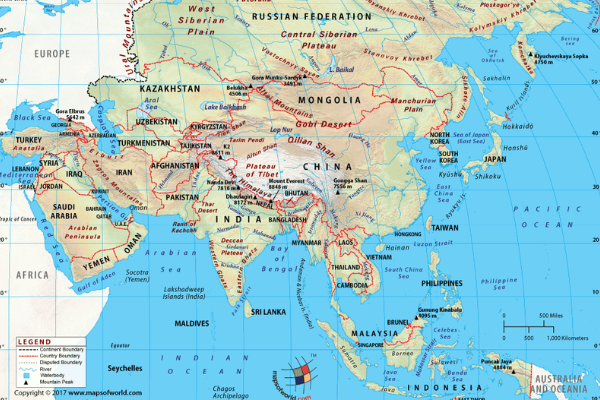Search
Get started
Log into your referral dashboard
May is Asian Pacific Islander Desi American (APIDA) Heritage Month and this is the perfect time to teach your students to embrace diversity. Here’s how to bring the exciting celebrations to your classroom!
What does APIDA stand for?
The term “APIDA” stands for Asian Pacific Islander Desi American. This word encompasses:
- East Asia
- South Asia
- Southeast Asia
- The Pacific Islands of:
- Melanesia
- Micronesia
- Polynesia

When to use the term APIDA
Remember that “APIDA” covers a wide range of countries, cultures and peoples. Because this term is so broad, take care to use specific names when referring to a group of people or country.
So, be specific whenever possible. Use specific ethnic identifies such as the Hawaiian Islands or South Korea, when you can.
If you’re referring to people with varying APIDA ethnicities, then you can use “APIDA” or “AAPI”.
Other names for APIDA
The acronyms “APIDA” and “AAPI” are great examples of how language, acronyms and terminology can change over time.
AAPI, which stands for Asian American Pacific Islander, was the most common Asian acronym in the 1990s. But as of 2010, “APIDA” has taken its place as a more inclusive term.
Both AAPI and APIDA are acceptable to use. But, keep in mind that APIDA (Asian Pacific Islander Desi American) is more inclusive. The term “Desi” specifically recognizes South Asians and South Asian Americans.
Some people in the AAPI/APIDA community also prefer to use Asian American.
When in doubt, just ask what their preferred identifier!
A word to avoid
The term “Oriental” is another example of how terminology changes over time. In the past, before the 1970s, this term was an acceptable way to describe people of Asian descent.
Now, the word stirs up a lot of stereotypes about Asia. It’s associated with being exotic, mysterious and dangerous. These associations say that Asians will always be perpetual foreigners in the West. Even if they were born in a western country and consider it home.
In his book, titled Orientalism, Edward Said said that the term “Oriental” divides the West and the East. This word puts the West as being superior over the inferior and undeveloped East.
This word is no longer acceptable and you should avoid it. As educators, we have a job to help all students feel safe in the classroom. This starts with removing offensive words from our speech.
How to teach APIDA Month in the classroom
Not sure how to begin teaching APIDA Heritage Month in the classroom? We’ve got some tips to help you start!
The great thing about learning how to teach APIDA Heritage Month is that these tips aren’t limited to just the APIDA community. You can apply these suggestions whenever you teach about cultural diversity. It’s not limited to APIDA Month!
1) Be respectful
Firstly, adopt a nonjudgmental and accepting tone towards different ways of life. In particular, don’t laugh or mock cultural practices that you’re unfamiliar with.
When you use a sensitive and respectful approach, your Asian American students will feel cultural pride. Additionally, your respectful attitude will teach everyone else to be respectful as well.
You’ll create a culturally-responsive classroom environment that respects everyone!
2) Acknowledge your limitations
The APIDA community is too large to cover in a short amount of time – but don’t feel bad about it!
Just remember to let your class know that you can’t cover all the APIDA cultures and heritages in the time you have with them. This way, your APIDA students will not feel left out or forgotten if you don’t get to their country and culture.
Encourage your students to use the resources below to continue studying on their own time!
3) Encourage kindness and curiosity
There is nothing wrong with teaching your students to be curious about other cultures. However, emphasize to them that they must be respectful when asking questions about a culture they’re unfamiliar with.
Let them know that if they ask an insensitive question or accidentally offend someone, saying “I’m sorry” is always a good response. This can also be a good time to learn why something is offensive if the one offended wants to share. Just remind everyone that they shouldn’t push someone they’ve hurt to explain if the offended one don’t want to.
How to not teach APIDA Heritage Month in the classroom
It’s important to know how to guide discussions about diversity. Here are three things to avoid when discussing APIDA Heritage Month.
1) Do not appropriate culture
Cultural appropriation happens when a member of a dominant group mocks, mimics, adopts, or steals parts of another culture with less social power. This is usually done in an exploitative, disrespectful, or stereotypical way.
For instance, when you teach about Asian cultural wear, don’t tie up your hair with chopsticks. And avoid putting your hands together in a namaste pose. Not all Asian people put their hands together when they greet each other!
- Check out this article by NPR.org that explains how the West has commodified the word namaste!
If you’re unsure if you are appropriating something, ask yourself if you’re being respectful or if people of the culture would be offended. Very Well Mind has a great list of questions to ask yourself to avoid cultural appropriation!
2) Do not mimic accents
Mimicking accents enforces a belief that there is a correct way to speak English and that most Asians speak English incorrectly. Accents are a result of someone learning a foreign language and you should be respectful of that.
Rather than copying an accent, discuss with your class why speaking like that is harmful. Even within the Asian and Asian American community, accent mocking is an issue that many community members are trying to move away from. Throwaway, or casual, racism like this causes real damage for Asian community members.
3) Do not generalize
When you start saying things like “The entire APIDA community is…” or “Every Pacific Islander does…” or “All Japanese Americans like…”, you start heading into a place of generalizations and stereotypes. There isn’t a singular “APIDA experience” so avoid making statements like these.
Sweeping generalizations will teach your class that it’s acceptable to enforce stereotypes and ignore the complexities within this community. Avoid doing this to create a healthy discussion around diversity in the classroom.
What to teach during APIDA Heritage Month
Not sure where to start when it comes to talking about cultural diversity in the classroom? We’ve got you covered! Keep reading to learn how you can bring APIDA Heritage Month to your class.
Origins of APIDA Heritage Month
First, you can tell your class about the history of APIDA Heritage Month and where it started:
In 1992, New York Congressman Frank Horton introduced a bill to name May as APIDA Month. His actions were motivated by Jeanie Jew, a former staffer on Capitol Hill.
Jeanie Jew had the idea to celebrate Asian Pacific Americans after she noticed the lack of Asian representation in the 1976 U.S. Bicentennial celebrations.
Jew’s great-grandfather, M.Y. Lee, was one of many Chinese immigrants in the 1800s. These immigrants helped build the Transcontinental Railroad and impacted American history. Jew knew it was only right to acknowledge their work.
Unfortunately, Mr. Lee was killed during a period of violent anti-Chinese and anti-Asian sentiment. Mr. Lee’s story and the stories of other Asian Americans motivated Jeanie Jew to push for a week of Asian celebration. This week was meant to:
- Celebrate the impact Asians have had on American history
- Encourage other Asian Americans to learn about their heritage
After years of advocating and gathering support, Jeanie Jew’s campaign was a success. May 4 became the starting day for Asian/Pacific American Heritage Week. This week commemorates two significant events:
- The arrival of the first Japanese immigrants to the U.S. on May 7, 1843.
- The completion of the Transcontinental Railroad on May 10, 1869.
On May 7, 1990, President Bush declared the entire month of May to be Asian/Pacific American Heritage Month.
Later on, the name was changed from Asian Pacific American Heritage Month to Asian Pacific Islander Desi American Month.
Breaking down stereotypes
Next, discuss the Asian student stereotypes.
Growing up, many Asian Americans will have heard many harmful Asian academic stereotypes. Asian students are supposedly good at math and science; they always go to the top colleges – the list goes on and on.
Asian people are not predisposed to being smarter than others and this belief places pressure on Asian students. As a result, these students feel like they can’t reach out for academic support and mental health help.
To make matters worse, these stereotypes only refer to East Asian students – people of Japanese, Korean, Taiwanese, or Chinese origin. As a result, South Asian, Southeast Asian, or Pacific Islander struggles are swept under the massive rug that is the APIDA umbrella.
Make sure to carefully explain this to your class. What you may think is a compliment to an Asian student, actually does more harm than good!
Important and influential APIDA figures
Finally, finish your lesson with a discussion about influential APIDA people!
You can discuss notable APIDA and AAPI figures in any class you sub for. There are important Asian, Asian American, and Pacific Islanders in every field!
NPS.gov has a detailed list of several important Asian American and Pacific Islander individuals.
If you’d like a longer list, check out Ongig’s blog of over 175 famous APIDA people.
Important resources
The discussion around the APIDA community doesn’t have to end when May ends or when class ends! Encourage your class to check out some of these interesting APIDA resources:
- The New York Public Library has an Asian American and Pacific Islander Heritage reading list for all ages.
- The Poetry Foundation has a poetry list highlighting Asian American voices.
- Many life-changing items were invented by APIDA scientists and inventors. Ideas.ted.com’s list features 8 Asian Americans and Pacific Islanders whose inventions have saved lives.
- History, tradition, and beauty collide in APIDA cultural clothing. Who What Wear covers some traditional dress-wear but remember that this is not a complete list!
- APIA Scholars is a scholarship for APIDA high school seniors about to enter their first year of college. The scholarship money ranges from $2,500 to $20,000 awards.
- For more information on why “Oriental” is a racist term: Check out We Are Resonate’s blog on the ugly history of the word and why it’s offensive.
Half the fun of APIDA Heritage Month is the fact that there’s so much to learn and enjoy. There’s always something new to discover in this vast community. Additionally, it’s great to know that you can help your APIDA students feel respected.








![How to write a strong substitute note [+free template!]](https://scoot.education/wp-content/uploads/2022/05/thank-you-426x235.png)



